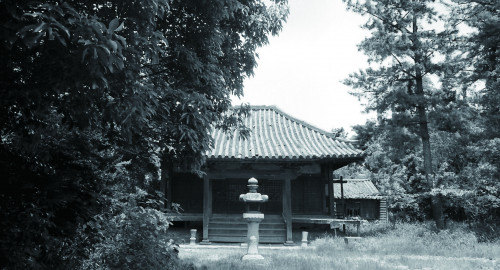Himeku Shrine · Kirinji Temple Remains · Minowayaki Legend
Himeku Shrine
Worshipped Deity Main Shrine Kubamitamanokami · amahachichihime
Shrine's precinct Kumano Shrine (Worshipped Deity Izanaminomikoto), Ookuninusi Shrine (Worshipped Deity, Oomononusinomikoto)
Kotoshironusi Shrine (Worshipped Deity · Kotoshironushinomikoto), Kasuga Shrine (Worshipped Deity,Amenokoyanenomikoto)
Main Shrine Kasuga (designated as a prefecture designated cultural property in 1967) In the early Edo period
The special sale which is settled in Karasuri The shrine of Hisami shrine is a ceremonial company which has a name in the name book of Yushiki ceremony which was established in the first half of the 10th century and has an old vest. The main shrine moved the main shrine of Wakamiya Shrine of Kasuga Taisha Shrine of Nara City Kasuga Taisha to the Edo era at the Kasuga Shrine of Hinokochi (the architectural style which is built in one side of the wife's wife side, one side of the wife side, in Nara prefecture) It is designated as a designated cultural asset in Nara Prefecture. Big stones are placed between the main hall and the hall of worshipers, but this is taken from the top of the back of the mountain tomb of the island which is in the east.

Kirinji Temple Remains
Shingon Shrine Buzan
Master statue Wooden Juvenile Surface of Kannon (Specified Cultural Housing in Heisei 17 (2005)) Late Heian
Honkan Shrine In the Jinguji Temple of Shrine, the main hall was built on the west side of the company's premises, but now it remains only a trace. In the local, it was called "Kirinji" and it was familiar. It is said that it was held by the Dr. Yuushu Daishi about the middle of the Heian period. In November, 1430, the main hall and the main shrine were destroyed by the battle between Mr. Tsutsui and Mr. Chopstao, and then rebuilt. There is a tradition that the original wooden Tamagoni Kannon Statue of Honbune is the main honor after reconstruction, and originally owned by Emperor Toba was transmitted to this place.

Minowayaki Legend
There is a legend that the ceramic pottery called "Minowa-yaki" was burned around Minowa-ji. An interesting article on that is in the inscription made at the end of Tokaku in Seto City, Aichi Prefecture, far away.
According to it, a person named Katoshirouzaemonkagemasa (Kato Kagemasa) from Daiwa Country got to Sung along with Dogen, a monk who opened the Soto sect in the Kamakura period, learned how to make pottery, after returning home He found around the whole country all over the country, found the soil suitable for ceramics in Seto City, Aichi Prefecture, and began making ceramics in this place. Although Kato Kagemasa can not confirm the existence as a legendary person at the present moment, in Seto-shi it is called "Toushirou" and is revered as a potter.
"Dōjo" is regarded as the origin of the name of the place of Karasuri. Perhaps the scenery of the young days was pottery burning near Minowa Temple.
Heisei 30 (2018) March Kawanishi cho School Board of Education
Himeku Shrine
Worshipped Deity Main Shrine Kubamitamanokami · amahachichihime
Shrine's precinct Kumano Shrine (Worshipped Deity Izanaminomikoto), Ookuninusi Shrine (Worshipped Deity, Oomononusinomikoto)
Kotoshironusi Shrine (Worshipped Deity · Kotoshironushinomikoto), Kasuga Shrine (Worshipped Deity,Amenokoyanenomikoto)
Main Shrine Kasuga (designated as a prefecture designated cultural property in 1967) In the early Edo period
The special sale which is settled in Karasuri The shrine of Hisami shrine is a ceremonial company which has a name in the name book of Yushiki ceremony which was established in the first half of the 10th century and has an old vest. The main shrine moved the main shrine of Wakamiya Shrine of Kasuga Taisha Shrine of Nara City Kasuga Taisha to the Edo era at the Kasuga Shrine of Hinokochi (the architectural style which is built in one side of the wife's wife side, one side of the wife side, in Nara prefecture) It is designated as a designated cultural asset in Nara Prefecture. Big stones are placed between the main hall and the hall of worshipers, but this is taken from the top of the back of the mountain tomb of the island which is in the east.

Kirinji Temple Remains
Shingon Shrine Buzan
Master statue Wooden Juvenile Surface of Kannon (Specified Cultural Housing in Heisei 17 (2005)) Late Heian
Honkan Shrine In the Jinguji Temple of Shrine, the main hall was built on the west side of the company's premises, but now it remains only a trace. In the local, it was called "Kirinji" and it was familiar. It is said that it was held by the Dr. Yuushu Daishi about the middle of the Heian period. In November, 1430, the main hall and the main shrine were destroyed by the battle between Mr. Tsutsui and Mr. Chopstao, and then rebuilt. There is a tradition that the original wooden Tamagoni Kannon Statue of Honbune is the main honor after reconstruction, and originally owned by Emperor Toba was transmitted to this place.

Minowayaki Legend
There is a legend that the ceramic pottery called "Minowa-yaki" was burned around Minowa-ji. An interesting article on that is in the inscription made at the end of Tokaku in Seto City, Aichi Prefecture, far away.
According to it, a person named Katoshirouzaemonkagemasa (Kato Kagemasa) from Daiwa Country got to Sung along with Dogen, a monk who opened the Soto sect in the Kamakura period, learned how to make pottery, after returning home He found around the whole country all over the country, found the soil suitable for ceramics in Seto City, Aichi Prefecture, and began making ceramics in this place. Although Kato Kagemasa can not confirm the existence as a legendary person at the present moment, in Seto-shi it is called "Toushirou" and is revered as a potter.
"Dōjo" is regarded as the origin of the name of the place of Karasuri. Perhaps the scenery of the young days was pottery burning near Minowa Temple.
Heisei 30 (2018) March Kawanishi cho School Board of Education
